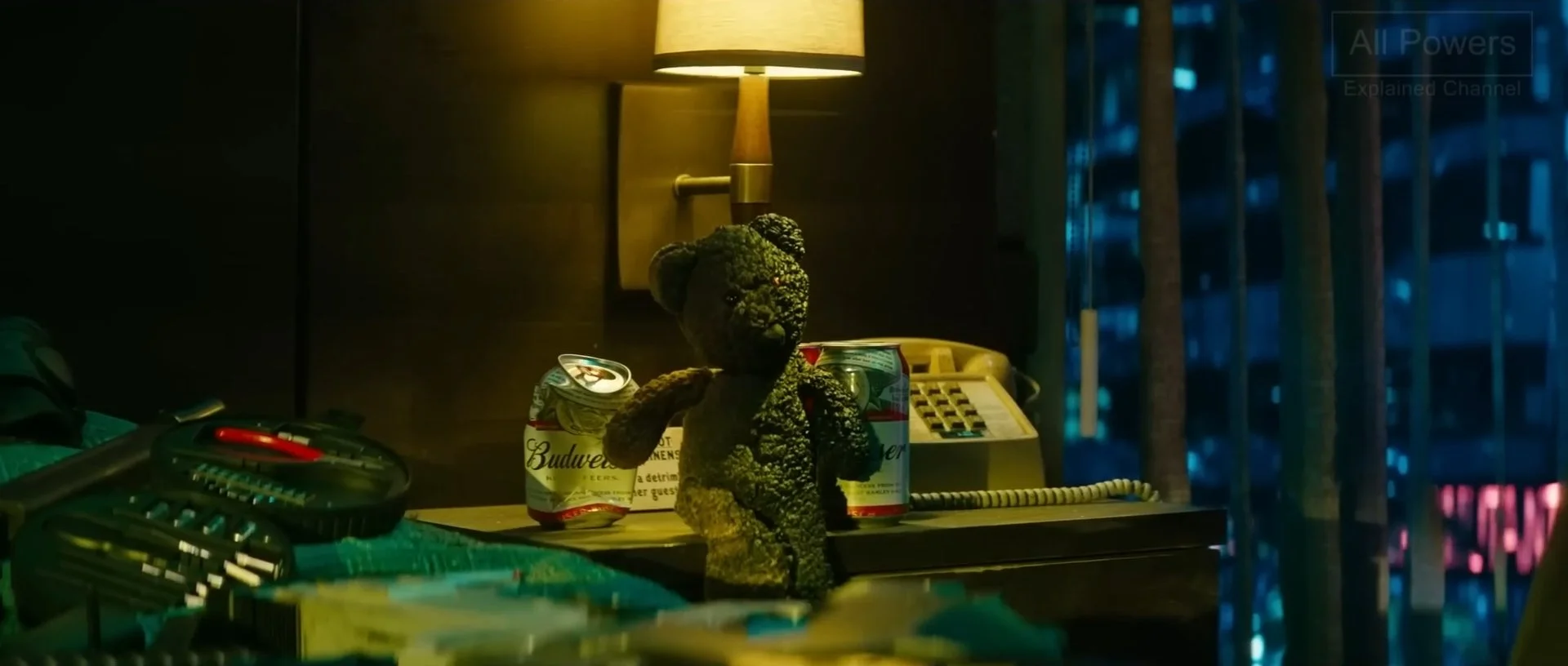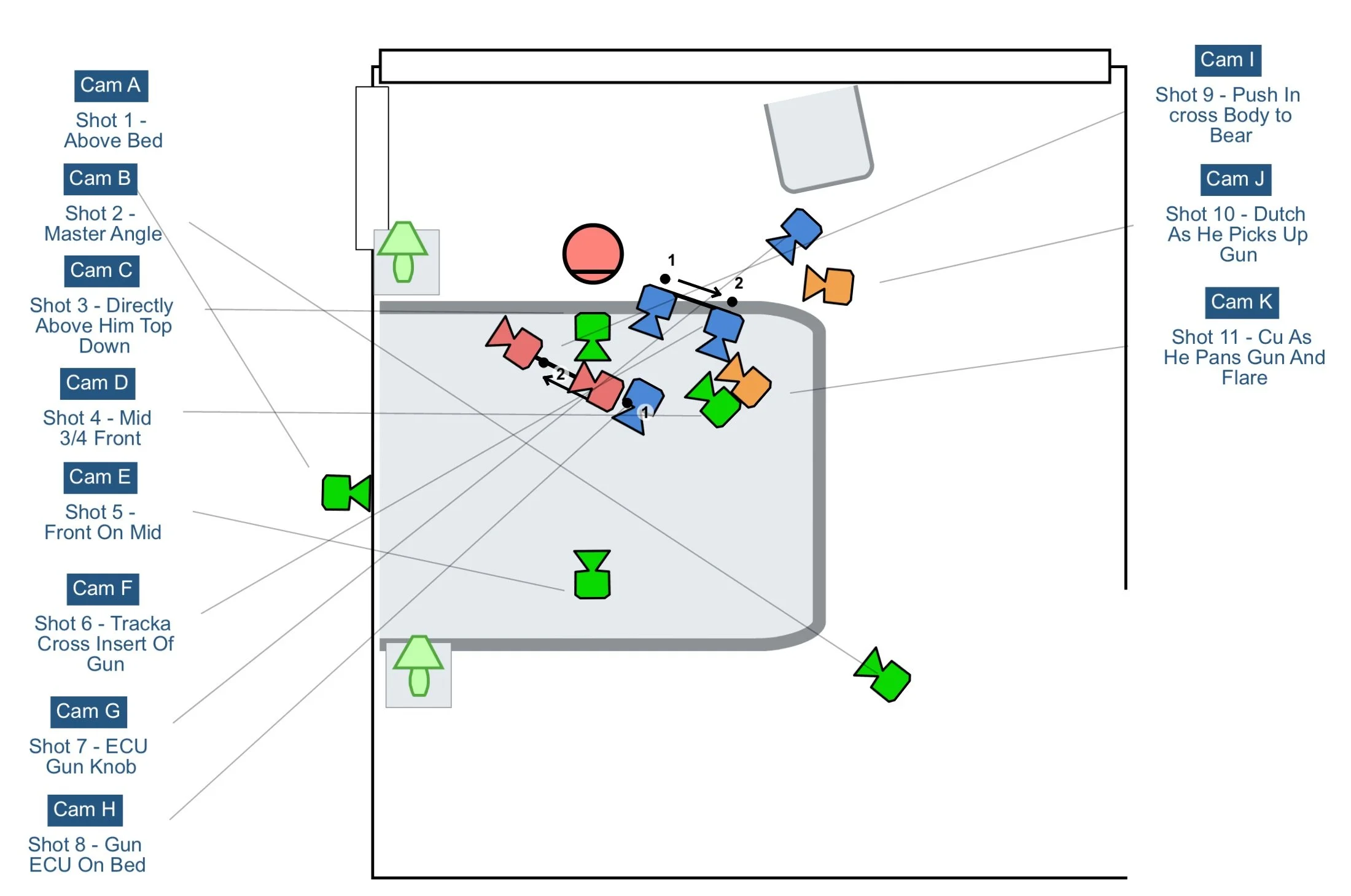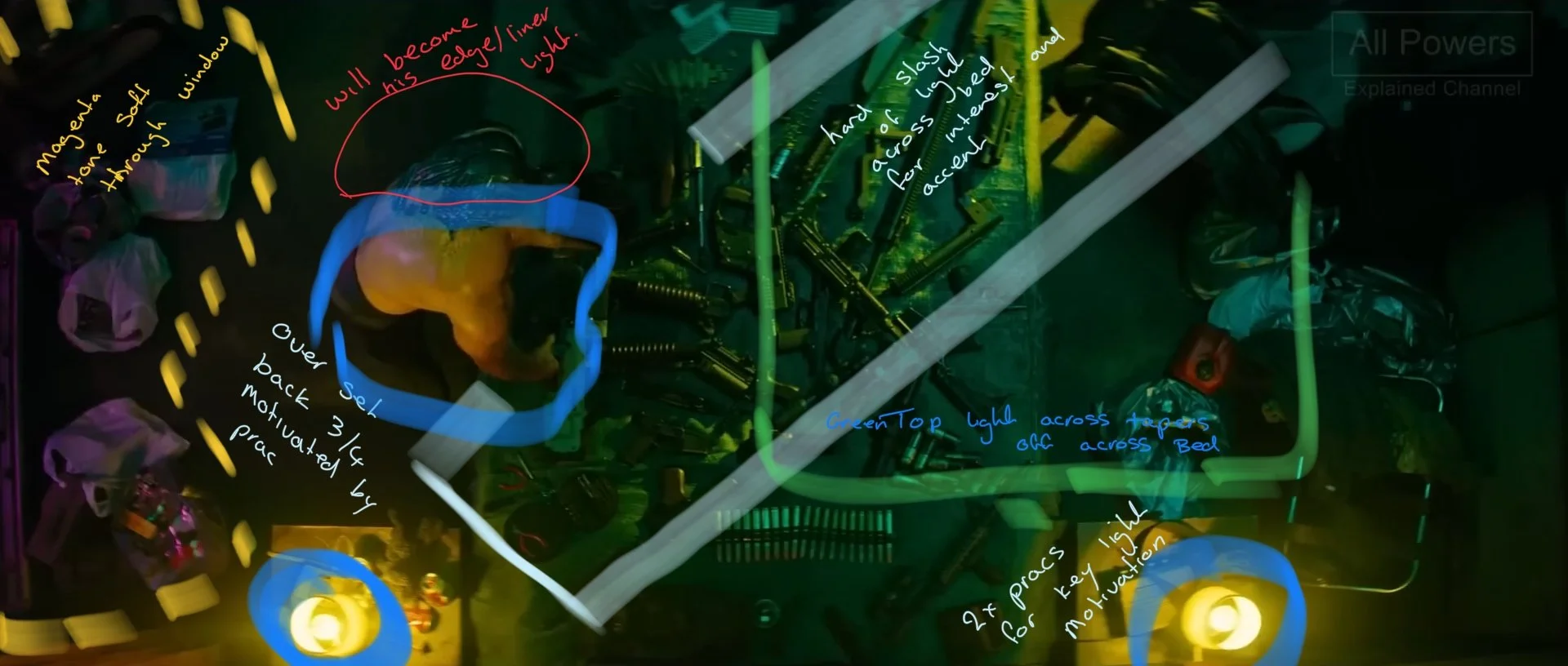deadpool 2: hotel room
I recently watched this film again and although I already love the work of DP Jonathan Sela, I began to notice some interesting techniques in his lighting that made me love him just that little bit more.
From clever uses of colour contrast, mixing hard and soft light to produce stunning accents and a phenominal subjective lighting model, he also uses old school techniques like dimming between lighting set ups as the camera moves through the spaces which I am a huge fan of and something I dont think is being encouraged in young DPs but something I think is very effective to get both consistent and good looking lighting, really just allowing you to not be stuck with one set up that works in some places but not in others. Blink and you’d miss it, rewind it and then watch it again but something, especially now with the freedom and flexibility that a simple LED litemat or Astera tube rigged about a window affords us can be pehnomially effective.
I remember reading a great ASC Mag edition…can I be bothered to find out which one…nah probably not; you can google it. Anyway, Natasha Braier, whilst working on “Honey Boy” would have titan tubes rigged through the sets, and due to their verite style couldn’t really have big set ups so she hid LED fixtures and sat herself at the dimmer board and wokred it like a DJ as the actors and camera moved through the set. A little bit of key, a smidge of fill and a touch of top light = a bit of fun and a great looking image that you can adapt as the camera rotates and that then-back light becomes a horrible hard front light BUT…alas….a bit of dimmer riding and you’d never know it was there - all hidden by the momevemnt and parralax of the actors and the camera. The smoke and mirors work.
ANYWAY…onto the breakdown.
Lets first talk about the scene…
© MARVEL STUDIOS - USE OF EDUCATIONAL PURPOSES
Cable essentially is prepping for his first encounter with deadpool and builds a bigger gun. Thats about it. What i really like is that this scene is about his intimidation and his clearly advanced abilities and weaponry BUT there is also a question asked of the audience, all through a shot intercut into the scene. It is more of an onservational shot but has a nice little push in across his body whilst he builds this gun, it represents his character perfectly.
It’s a shot of a lone teddy bear sitting on the bedside table. Cable is a man who’s sole purpose is to go back in time to kill and man who will eventually kill his family….sound familiar…cough cough….but this shot of the teddy bear sums this whole massive contradiction that is his caharacter up in one shot. Violence for the purpose of peace, suffering for the purpose of comfort, rage for the purpose of happiness…thats what makes him a great character.
© MARVEL STUDIOS - USE OF EDUCATIONAL PURPOSES
That shot right there. What is also interesting, which furthers my point about it being such an important shot is that its the only one point of coverage in the scene that has a push in/dolly in/track/in - however you want to refer to it, the creators clearly want you to remember it.
Now, lets breakdown all the shots for you and then we can talk about some lighting.
The lighting of this scene has three phases:
Cable surveys the bed
The hologram appears showing him how to assemble the gun
Hologram disappears as the gun is finished. Cable turns the gun on and we end scene as the frames flares to white.
The base lighting of the scene (minus the hologram light as that lives around shot to shot) is:
An ambient top light over the scene, in the top down shot it looks as though it has been tapered across the bed towards the left of frame, making the strongest portion being the right of frame. This could be for a few reasons but more likely than not it is to give some depth to a top down shot….which is very hard. I would imagine (as I can’t find any BTS online) is that this scene is a stage build and they have a large textile/rag above the set, maybe with a grid to stop it spilling around and a few soft LED units like sky panels over the top and all they have done for this top down is lowered the intensity on the lamps towards the left of frame to lower the fill and give that side some more contrast. It would also help not to mix with that magenta tone coming through the windows and the lights on cable.
The exterior light, there is an ambient cyan tone with a push of magenta around the camera right side of the window, this is due to the motivated neon light outside. I’m not sure wether this is a blue screen or wether it’s a trans light - my bet is blue screen though. We I’d imagine a top row of low level sky panels to give the ambient cyan tone and then a few specific units with grids to give that patch of magenta. This is a great trick with any form of “natural” interior lighting. If Sela was to leave the lighting being a perfectly flat and consistent cyan tone it would feel fake, audiences are smart, we know that light never perfectly hits a window wether it’s day or night. I made this mistake a lot in film school, I’d put a sunlight streak directly through a window on a day interior and stand back and question why it looked like a “set” - a great trick is to pan the lamp so it half comes through or is a slightly not ideal angle or on a night interior find another colour to come through at an odd angle. That “staged imperfection” is what enhances the verisimilitude for the audience
3. The streak light across the bed is a great way to add interest and drama to a scene, this is used a lot in this movie but also really well in films like “Apocalypse Now” - it can be a good way to highlight key information or create a sense of dread and foreboding. In this case, the motivation could be from the bathroom off screen but helps to make that bed not a flat top-lit area. Again, mixing the texture of hard and soft light is a great way to silicate the real world - it could be a sun streak hitting a wall and bouncing that light back to key your subject or car headlights passing a window at night.
4. The two pracs really help to motivate the key source and also give the room some visual interest
5. The key light seems to be coming from over the top wall of the set, it feels like a light mat or similar with a grid above him on a slight back profile, for the closer shots near the end of the scene it feels like it is maybe pulls around to become a more 3/4 front light
6. The back edge/liner light define toy on that opposing back 3/4 - maybe motivated by the window or the TV we see in the scene before - this much cooler tone helps to push cable out from the scene, it’s harsher/crisper texture also stops him blending into the cyan background. This light stays pretty consistent throughout.3.
7. The special FX light is that slightly red/orange/warm light from the hologram. In the wider shots it comes from a higher front-front3/4 above him, you can see this from the hollow eyes. Clearly they can’t hide it anywhere else. Then in the close ups where you can’t see the bed, it appears as though they bring another unit in underneath him, which is more powerful that the overhead as you can see the shadow on his body and light on the under side of his hands.
I am also a big fan of how the inserts utilise all these same elements to make them intersting. Usually, the insert shots fall by the wayside but hear they are all very well crafted - using the hardlight, ambient top and the practical motivationg to etch out brilliant storytelling devices.
Ok…well i think that will about do it for me.
If you have any suggestions of other scenes to breakdown send me and email.
Thanks for reading!
All rights are owned by Marvel Studios - This use is for education only.



















